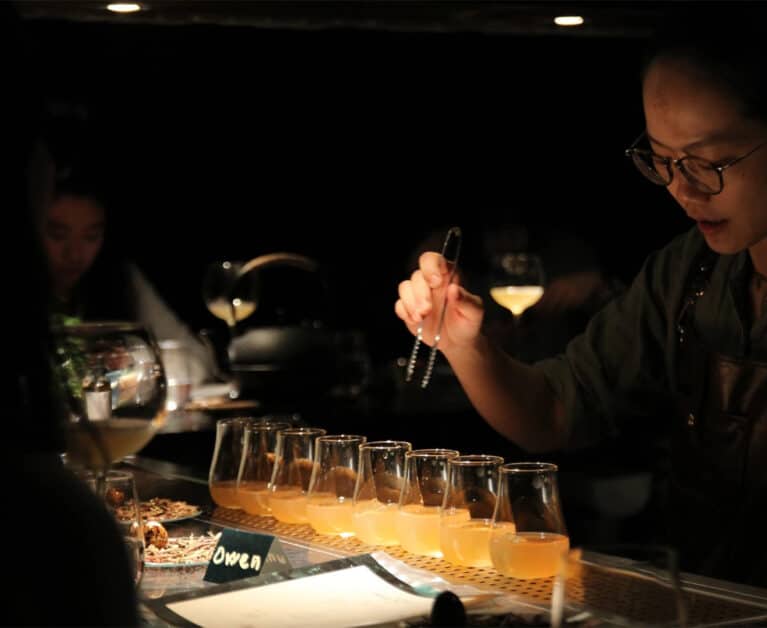Gyeongsangbuk-Do: Discover The Enchanting Charms Of South Korea With Slow Travel
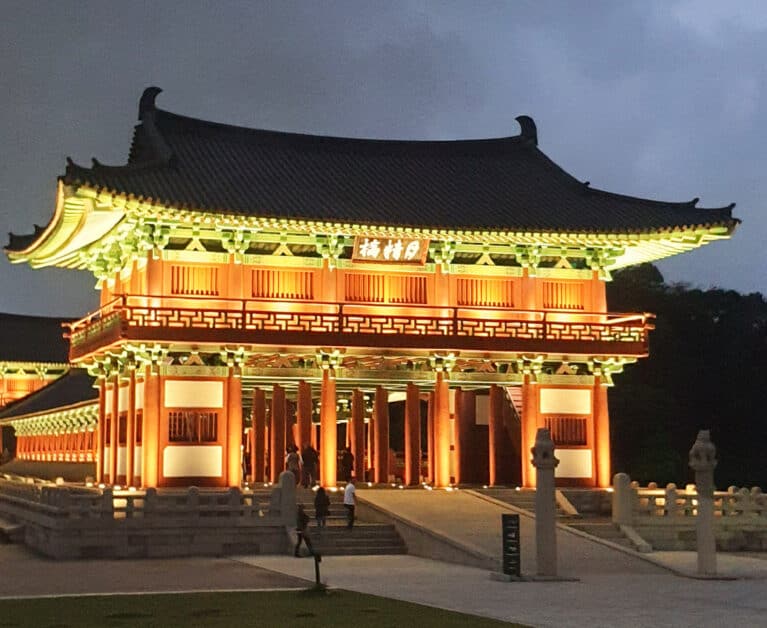
PUBLISHED June 28th, 2023 09:00 am | UPDATED March 13th, 2024 06:04 pm
Beyond the glitzy lights of K-pop and cosmopolitan cities, South Korea has a rich legacy of culture and heritage waiting to be unveiled. Flanked by national parks and breathtaking mountains, Gyeongsangbuk-do was the epicentre Korean culture in its golden age. Playing a significant role in the history of modern Korea when the country was unified in the 7th century CE, this was a beacon of Confucius’s learning, and where some of the most important battles for independence were fought.
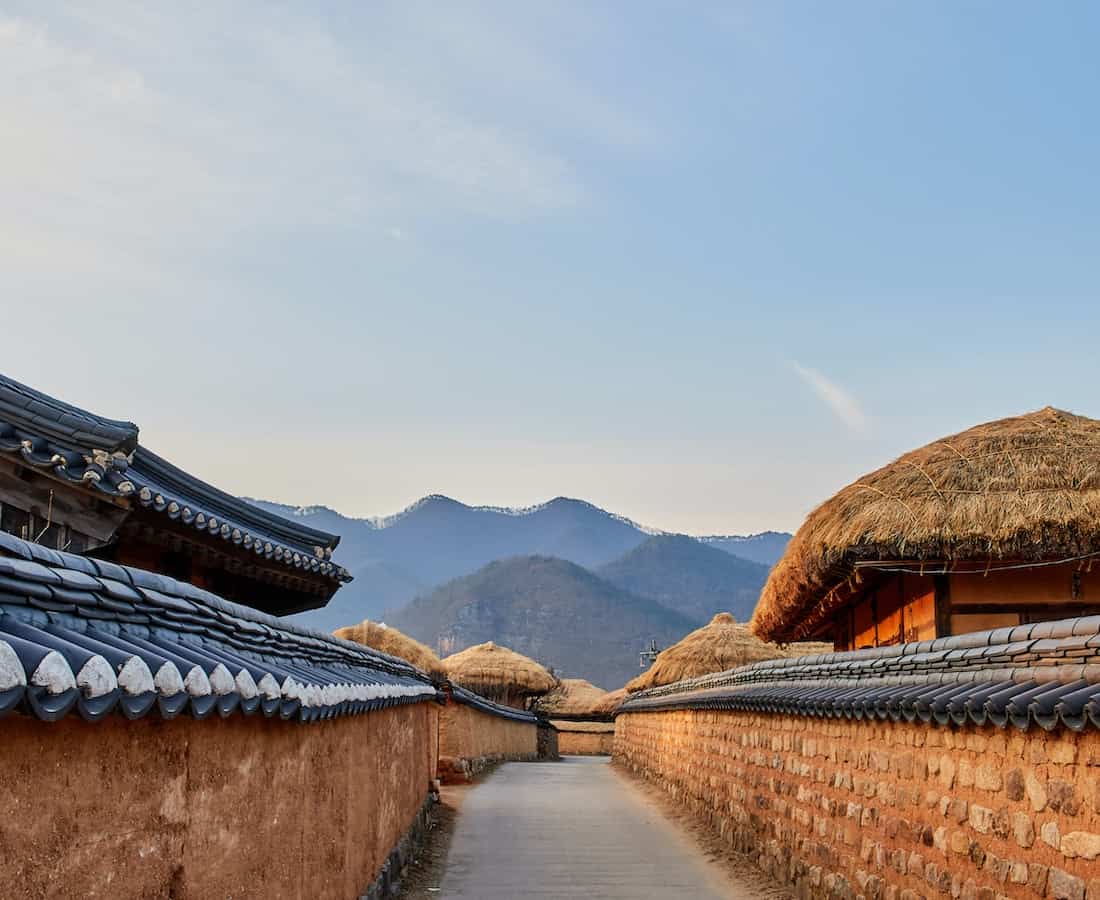
Take the time for a road less travelled through South Korea and immerse in the storied past. Watch its glorious heritage unfold and connect with the locals as you discover the enchanting charms of Gyeongsangbuk-do.
Getting To Gyeongju and Andong
The nearest airport to Gyeongju and Andong is the Gimhae International Airport in Busan. From Busan, it takes approximately one and a half hours on an express bus service to Gyeongju and about 20-30 minutes by KTX. The journey to Andong takes about two hours and 30 minutes; you can take the bus or the local train service.
Local buses and taxis will take you to the key attractions with ease, alternatively, join walking tours or explore with a guide.
Gyeongju – The Museum Without Walls
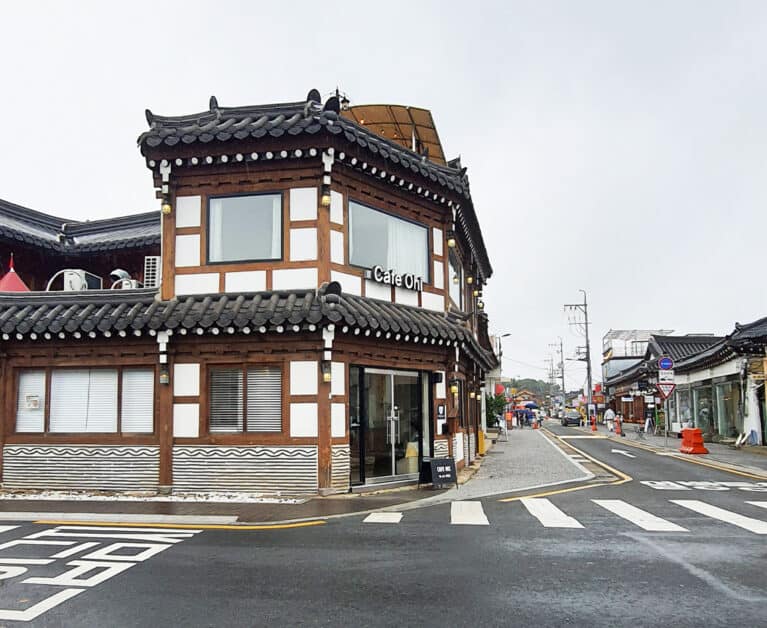
Gyeongsangbuk-Do is home to several historical and UNESCO World Heritage sites from the Silla Kingdom. Gyeongju is South Korea’s ancient capital, so you can expect several archaeological sites and cultural artefacts. Earning it the moniker “the museum without walls”, Gyeongju City buses connect attractions that also can be seen via cycling or a leisure stroll.
Bulguksa Temple

One of the most impressive temples to visit is the Bulguksa Temple (translating to “The Temple in Buddha Land” in Korean). Constructed in the eighth century, it has been a UNESCO World Heritage Site since 1995. The then-monarch built this Buddhist work of art to usher good blessings for the city. With the temple’s design mimicking the journey to Buddha’s land, it puts forth the intent that a good and peaceful life is within reach. More than good intentions, the treasures here boast strong national significance, with the relic of Shakyamuni Buddha believed to be in one of the pagodas. If you look closely at the 10-Won coin, you will find one of the pagodas, Dabotap Pagoda, on it.
Tumuli Park
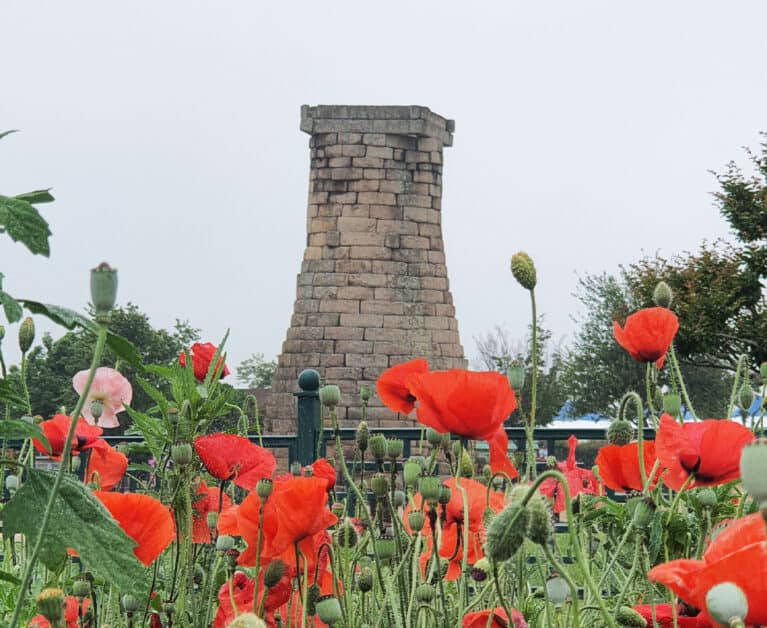
Continue your exploration at the Tumuli Park (Daereungwon Tomb Complex), where you can stroll through a garden of tombs belonging to ancient royalty. Stop by the oldest astronomical observatory in East Asia, the Cheomseongdae Observatory. It was build during the reign of Silla Queen Seondeok to make astronomy accessible to everyone. Although only nine metres tall, it was considered a structure ahead of its time. A short walk takes you to Hwangnidan-Gil, a cultural street filled with quaint cafes, restaurants, and experiential guest houses. Grab the cheesy 10-Won Bread, drink at the Hanok-styled Starbucks, or dress up and take some shots at the photo shops.
Andong – The Capital of Korean Spirit
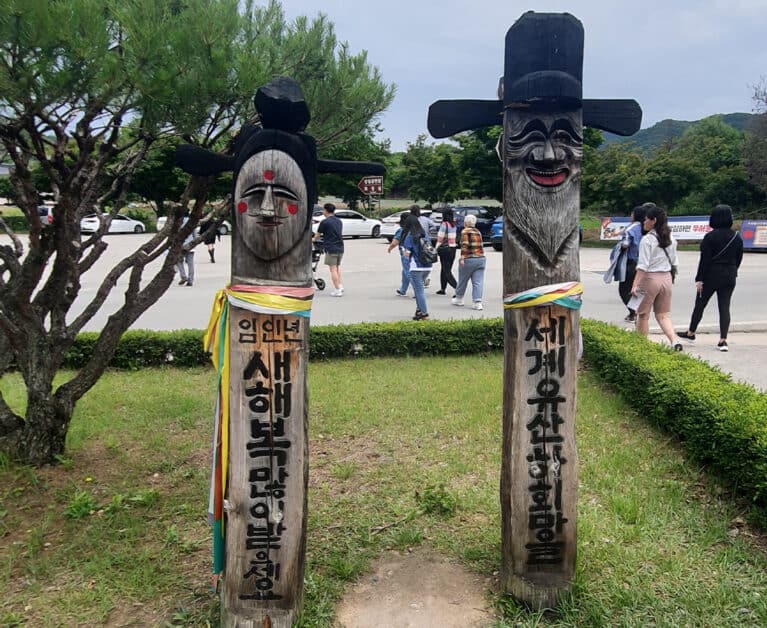
The city of Andong is the cultural capital of South Korea. It’s best known for its wooden masks, mask dance, Korean paper (Hanji) and a braised chicken dish called Jjimdak. Complete your visit with a trip to the Andong Hahoe Folk Village. The village owners preserved and maintained the hanok in the village, opening some for an authentic traditional Hanok stay. With its peaceful surroundings and views of the vast rice fields, it is easily one of the best stays in the area.
Andong Hahoe Folk Village
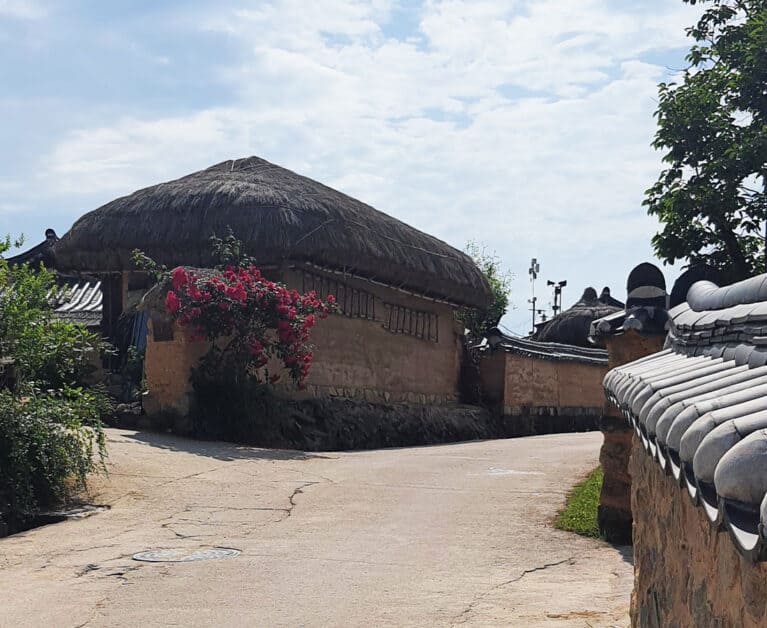
This UNESCO World Heritage Site dates back to the Goryo period and was home to commoners and noblemen alike (unlike the Bukchon Hanok Village in Seoul, where only noblemen lived). Visit some of the houses and walk up to the village’s highest point to find an old zelkova tree. Believed to be inhabited by the Samsin Goddess, this 600-year-old tree is known to grant wishes. Walk three times around the tree, write your wishes and hang them up on the tree line. Stroll a little further, and you’ll come to the scenic Mansongjeong Pine Tree Forest. From here, hike up the Byongdae Cliff for a bird’s eye view of the entire village.
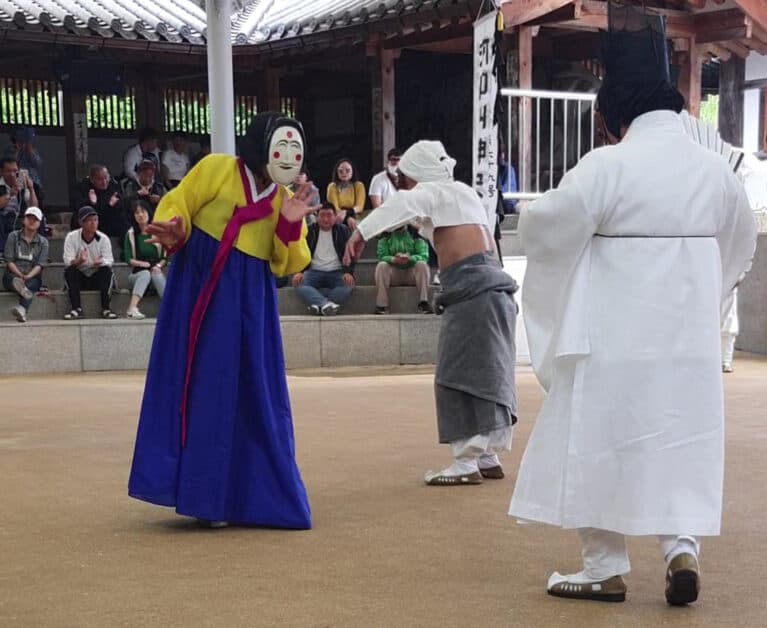
If you visit in October, immerse yourself in the intangible cultural heritage at the Andong Mask Dance Festival. Participate in the activities, and catch the traditional mask dance performances. Commoners used these comedic performances to mock the noblemen and officials. And this gives us a glimpse of the society in the past.
Wolyeonggyo Bridge
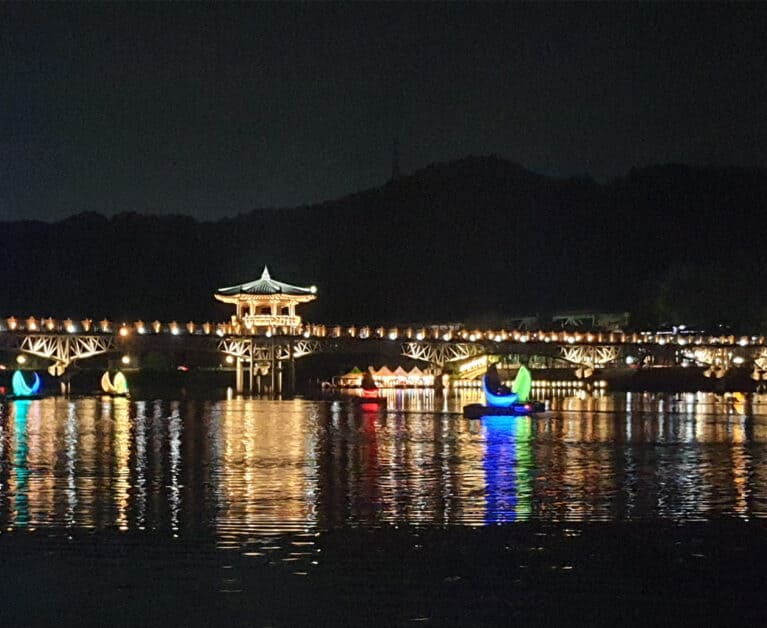
At night, head over to Korea’s longest wooden bridge (387m), the Wolyeonggyo Bridge. Also known as the Moonlight Bridge, admire the lit-up bridge from below in a moon-shaped boat. Or take a night stroll on the bridge and watch the Moon-shaped boats float around the Nakdonggang River.



